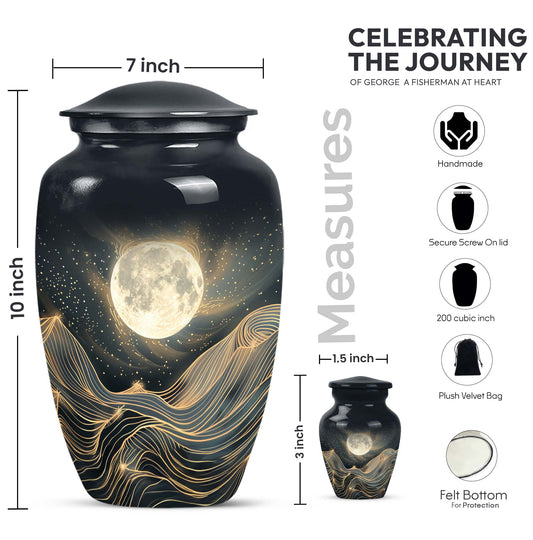Popular Urns
Scattering Ashes in National Parks: Mourning in Nature

How And Why To Spread Ashes In National Parks
Scattering ashes in a natural context can be appropriate to the memory and tribute of a person who loved being outside in nature. Because national parks are serene and beautiful, there are many families who will scatter their loved one's ashes here.At the same time, one needs to be mindful of the rules and regulations, permissions, as well as a respectful way that should surround the scattering of ashes when it takes place within protected places such as national parks. Here is what you should know when paying your respects to somebody over nature by honoring national park policies and natural environments.
1. Understanding the Regulation and Permits:

Ash scattering in each national park has its own regulation. Although most national parks permit ash scattering, it is often done with a permit or written authorization obtained from the administration charged with overseeing the specific park. Since such restrictions are in place, the practice is carried out respectfully and does not interfere with the purpose of the park to achieve its mission of conservation.
Preparation will also require checking the website of the particular park or visitor center because some sites have bans on where and when ashes can be sprinkled.
Permits or permission are rather easy to obtain but it could cost a small administrative fee. Rules are very varied, and, therefore, there are only a few parks which permit scattering within rather specific areas, while other parks may completely ban it during certain times of the year or seasons because of the need to protect certain environments in order to maintain local flora and fauna. Paying attention to always keeping to such rules also ensures the park remains at its best, and for that matter, everybody enjoys coming to visit.
2. Selecting a Relevant Site:
Pick a location within the park that would have especial meaning to the deceased; it could be an especially favourite hiking trail, an isolated beach or scenic overlook, something like that. The idea would be that the selection of a meaningful location can and does deepen the sense of connection and provides comfort.
It seems that the experience of scattering becomes even more special if it is in a view-worthy place, perhaps beautiful vistas with any natural feature of a quiet place.
Some national parks scatter ashes in quieter places few people visit, to preserve the beauty of nature and not desecrate the most visited parts of the park. Consider the easy accessibility of the chosen place for all who will attend, especially if elderly family members or children are to participate in the ritual.
3. Practicing Leave-No-Trace Principles:
It is also a requirement that Leave-No-Trace principles have to be followed so as not to disturb other visitors and the environment. In most parks, ashes are meant to be dispersed at least hundreds of feet away from water sources, trails, and developed areas in which no harm whatsoever will befall the wildlife as well as the quality of water.
As much as possible do not leave any nonbiodegradable item like flowers or mementos in the site since they can disturb the ecosystem. Ashes are usually spread in part instead of the entire amount so as to ensure that the experience remains respectful but with a low impact.
4. Planning a Meaningful Memorial Ceremony:

Adding to the simplicity would be a ceremony where meaning would be added to the experience. Some families can read poems, share memories, or sing favourite songs of the person being honored. The small gathering at the scattering site could become an opportunity for unity, reflection, and healing. Balancing the group with small numbers is good because large crowds impact the environment of the park and visitor experiences.
5. Commemorating the Visit:
Of course, it can be offset by a personal act of paying tribute on the day. Families can't erect memorial markers in national parks, but they can always photograph the event, or write about it in a journal, so to retain a sense of memory. Some would also consider giving to the park or to environmental charities in honor of their loved ones; thereby, they leave behind a legacy in the natural world that they cherished.Acting on guides, selecting a location, and being observant of one's surroundings all help make a family tribute that is pretty memorable as both in paying homage to the park itself and paying respects to a loved one.



























































































